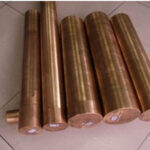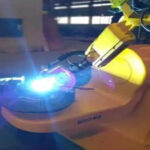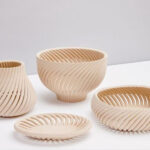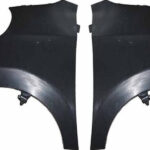The reasons for the processing deformation of aluminum alloy parts and the conventional process methods, the process route is improved according to the material characteristics and part characteristics, and the processing deformation problem is solved through the improvement of aging treatment and processing methods.
At present, aluminum alloy materials are widely used in aviation, aerospace, automobile, machinery manufacturing, shipbuilding and chemical industries. For the research content of aluminum alloy workpiece processing technology, most of them are how to control the deformation of aluminum alloy, so as to further improve the accuracy of the product.
1. Conventional processing methods for aluminum alloy workpieces
Table of Contents
(1) Blanking processing
also known as nesting processing, that is, using a method similar to milling grooves to make the workpiece fall off the blank, generally the bottom surface is 0.10 ~ 0.15mm. This processing method is often used when there is a large amount of material removal in the shape, cavity and inner hole, which can avoid the final deformation of the workpiece due to heat and internal stress concentration caused by large margin opening.
Blanking processing plays an important role in preventing the deformation of aluminum parts. Especially with suction cups, it can solve the deformation and clamping problems of a large class of thin-walled parts. It is very suitable for the processing of plate parts. Blanking processing is shown in Figure 1.
(2) Vacuum suction cup method
The positioning surface of the workpiece is adsorbed on the suction cup, and the workpiece is processed with the pressure plate. Suction cup clamping, with blanking processing methods, as long as the product has a surface that can be adsorbed, even slopes and curved surfaces are also suitable. The use of suction cups and blanking processing can complete the processing of various plate thin-walled parts, even if the plate thickness is only 0.5mm, it can be processed.
(3) Design reinforcement ribs and process material heads
If the product structure strength is not enough to support the subsequent finishing process, it is necessary to leave the reinforcement ribs when roughing, so as to ensure the clamping strength before finishing, and it is not necessary to remove the reinforcement ribs. Will generate excess heat and stress. The overall dimensions of the workpiece using this method should not be too large. E.g:
①The design of stiffener is convenient for vise to clamp and process the back of the workpiece.
②The design process material head is convenient for subsequent positioning.
③Design process material head + reinforcing ribs to facilitate subsequent positioning and processing.
A comprehensive application example of conventional processing methods is shown in Figure 7. The process implementation method is as follows:
①According to the structural analysis of the front and back of the product, the back side of the workpiece has less processing content and is suitable for positioning.
②The positioning surface makes up the surface, which is convenient for the subsequent suction cup clamping.
③The product is thin and easy to deform, and the front design of the stiffener can avoid the deformation of the rough machining of the product and the deformation of the finishing surface of the positioning surface at the same time.
④After finishing the positioning surface, use the special suction cup tooling to clamp the front surface of the product.
e) Special suction cup tooling and clamping, finishing front f) Special suction cup tooling in kind

2. Aging treatment
(1) Indirect aging treatment
that is, rough machining is used as a single process instead of aging treatment. The workpiece is processed on the machine tool. After the rough machining is completed, the workpiece is removed, and then the finishing process is performed. There is no interval time in the middle (if it is a mass production product, the finishing process can be carried out after uniform roughing, and the interval aging time is not required). Note: The workpiece needs to be completely roughened, and after the overall roughening, a margin of 0.5mm is left on one side before finishing.
The roughing process of the blank is an indirect aging treatment, and the second loosening and clamping process of the workpiece is an indirect release process of stress. This method is suitable for the processing of most precision structural parts and aviation structural parts.
(2) Aging treatment
① Artificial aging:
For aluminum alloy workpieces, most of the methods are to leave it for 24 to 48 hours after roughening. Mainly for large parts and thin-walled parts, the process is slow.
②Heat treatment aging:
Compared with the artificial aging process, it is faster, and it is mostly used in closed parts with complex structure and large allowance.
Both methods are still used in the processing of aluminum alloy workpieces, and they are mostly used in products with large removal margins and high precision requirements. The purpose is to remove internal stress and obtain a stable structure. If the product is a power part in structure , most require aging treatment: firstly, aging treatment can effectively eliminate internal stress and ensure the dimensional stability of subsequent processing; secondly, while removing internal stress, it can be Obtain a stable tissue, so as to avoid the continuous heat generated during exercise to deform the originally qualified product again.
3. Methods to prevent the base surface deformation of aluminum alloy products
In processing, it is often encountered that the reference surface has been deformed before finishing, and cannot be used as a finishing reference. Also, because the deformation of the aluminum alloy workpiece is elastic deformation, there will be springback after loosening whether it is pressed or clamped. , Resulting in dimensional deformation and over-tolerance after finishing.
The methods for preventing deformation of the reference surface of aluminum alloy products are summarized as follows.
1) If the workpiece can only be milled, the reference surface must be machined under the premise that the strength of the workpiece body is sufficiently high, so that the reference surface for finishing milling will be flat.
2) If the workpiece can only be milled, and the workpiece is relatively thin, it is also necessary to repeat it several times, that is, to turn the surface several times, to effectively eliminate the deformation under the condition that a reference surface is relatively flat. . However, the final surface obtained by this method will still be deformed.
3) When the structure of the workpiece itself allows, turning is also a good method, and the surface of the turning is flatter than milling. Because almost no heat is generated during the turning process, it is not necessary to perform semi-finish machining after rough machining, but to turn the reference surface in place at one time.
The datum surface of a square product is always deformed during milling. Even if the feed speed of the tool is very slow, since the tool and the workpiece are in surface contact, heat and stress will inevitably be generated. Finally, a single-action chuck was used to clamp the square workpiece, and a qualified reference surface was turned out. After all, turning is the point contact of the tool tip, and there will be no large-area heat and stress concentration. Examples are as follows.
The product to be processed is shown in Figure 9. The workpiece material is 2A12-T4, the blank size is 120mm×400mm×12mm, and the product size is 370mm×110mm×7mm. The parallelism of the two large surfaces is required to be 0.03mm and the flatness to be 0.025mm.
Initial process method: using a machining center with better accuracy, repeated turning and milling many times to remove excess margin, and the geometric tolerance of the thickness cannot meet the requirements. Improved process method:
① Use a lathe with a single-action chuck to clamp, and the turning side will see the light.
②On the machining center, the shining surface is used as the positioning surface, and threaded holes are made around the blank under the premise of ensuring that the workpiece is not damaged.
③Making special tooling for lathes, tightening the workpiece with screws in reverse direction, turning the thickness of the product to the size of the drawing requirements.
4. Clamping ideas to prevent deformation of aluminum alloy products
In addition to the suction cup clamping to prevent deformation, how to clamp the product that cannot be clamped by the suction cup? It can be said with certainty that in addition to clamping with a vise when roughing, most of the subsequent processes are not allowed to directly contact the workpiece with a vise. Because the force of the vise is horizontal, and the workpiece material itself is a deformable material, the clamping force of the vise will cause elastic deformation of the workpiece, so the workpiece needs a reasonable downward clamping force, that is, a similar pressure plate or screw is used The way of clamping.
The design idea of aluminum alloy workpiece processing tooling is actually to consider the direction of clamping force. The reference method is as follows:
①Design special tooling + special pressing plate, thread reverse drawing tooling.
②Inner hole fit + small boss limit.
③Design soft jaws with pins.
④Design V-shaped positioning tooling with limit.
⑤Design single-piece tooling blocks and multi-module tooling that match the shape.
⑥Design the tooling with special pressure plate
5. Process improvement measures for the plastic deformation of cast aluminum parts
Cast aluminum products have certain particularities. Because it is a casting, the product accuracy requirements are usually very high. Some unimportant parts of its shape have been cast, but it has some shortcomings while being convenient:
①The structure of the casting itself lacks rigidity, and the clamping rigidity is even lacking during processing.
②The casting is a stress concentration body in the process of processing. After a little processing, internal stress will exist.
③The datum plane and datum hole of most aluminum castings are prone to plastic rebound.
The processing technology is improved as follows.
1) The first improvement: During the machining process, due to the size shrinkage phenomenon after the hole processing is completed, the detected shrinkage amount is 0.005mm per side, so the fine boring size unilaterally increases by 0.003mm. In the method of boring holes, add two empty tools. The tolerance of the inspection hole is qualified, but the geometric tolerance of the product is out of tolerance.
2) The second improvement: Change a way of thinking, add a light knife to the large plane and the opposite surface respectively, and the light knife margin is 0.08mm, which successfully ensures the product size and geometric accuracy. It can also be seen that the Plastic deformation should be paid attention to.
6. The aluminum alloy material itself is easy to deform
The machining properties of two commonly used aluminum alloy materials are as follows.
(1) 2A12 aluminum alloy can be strengthened by heat treatment, and is often used in high-end products such as high-load parts and high-precision molds such as military industry and aerospace. Among them, 2A12-T4 is the most used hard aluminum alloy material. The machining performance of 2A12 aluminum alloy is good, but its biggest feature is that it is easy to deform, and it is a representative material that tests the level of craftsmen.
(2) Although the strength of 6061 aluminum alloy is not comparable to that of the 2 series or 7 series aluminum alloy, it has excellent welding characteristics, electroplating properties, and good corrosion resistance. It is widely used in industry and its output has exceeded that of non-ferrous metal materials. 1/3 of the total, often used in various process structural parts with high requirements for strength and corrosion resistance, such as ships, trams, and mobile phone cases. The machining performance of 6061 aluminum alloy is excellent, and it is not easy to deform, but once it is deformed, it is almost scrapped, and the shape correction is very difficult, except for products with special structures.
7. Open hard filling and chemical filling
(1) Open hard filling (see Figure 17)
Figure 17a shows the state after roughing, the inside is the workpiece, the outside is the blank, and it is the open blank. The reason why it is not made into a closed blank is because the cutting will cause a lot of stress concentration in the product. The rigidity of the pin-hole coupling block is increased. After rough machining, the coupling block can be removed, and after the stress is released, the coupling block can be connected again for subsequent finishing. In order to reduce the deformation of the workpiece. It is worth mentioning here that one of the most important functions of filling is to enhance rigidity, and the other function is to increase the timeliness of the product.
After the inner arc surface of the workpiece is processed to meet the size requirements, it is matched with the inner arc surface to fill the support tooling to process the external margin and play the role of enhancing the rigidity.
(2) Chemical filling
is mainly used for finishing. The author has only used this method once at present. It is to chemically fill a thin-walled arc-shaped aluminum alloy blade with the aid of tooling. The chemical substance is filled into the processed arc surface, and as the chemical substance solidifies, it is a seamless support for the clamping surface, which not only prevents deformation, but also avoids the phenomenon of knife vibration due to the thinness of the product during processing. This method is not a popular general method, but a special process scheme for special products.
8. Fitter calibration
Most of the fitter’s calibration is aimed at board parts, which very test the skills and experience of the fitter. And fitter calibration is mechanical calibration after all. After all, products that can be calibrated need at least a good body as a prerequisite. In addition, the author believes that most of the products of the school will not be too high in value. Fitter calibration is generally divided into rough machining and finishing calibration. A skilled fitter calibrates the board products, and the leveling accuracy is about 0.1mm.
9. Concluding remarks
There are many technological methods to prevent deformation of aluminum alloy workpieces, and it is particularly important to change the way of thinking. In actual processing, we must grasp the part structure and material characteristics to find breakthrough points, adopt reasonable clamping methods and cutting routes, eliminate stress and deformation through aging treatment, and use simple methods to solve complex problems.
Link to this article: Process method for preventing deformation of aluminum alloy workpiece
Reprint Statement: If there are no special instructions, all articles on this site are original. Please indicate the source for reprinting:https://www.cncmachiningptj.com/,thanks!
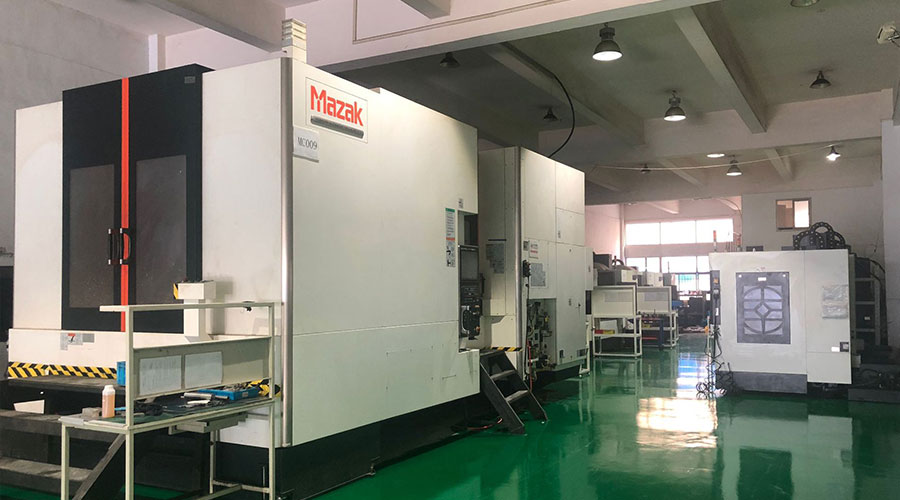 PTJ® provides a full range of Custom Precision cnc machining china services.ISO 9001:2015 &AS-9100 certified. 3, 4 and 5-axis rapid precision CNC machining services including milling, sheet metal to customer specifications,Capable of metal & plastic machined parts with +/-0.005 mm tolerance.Secondary services include CNC and conventional grinding, laser cutting,drilling,die casting,sheet metal and stamping.Providing prototypes, full production runs, technical support and full inspection.Serves the automotive, aerospace, mold&fixture,led lighting,medical,bicycle, and consumer electronics industries. On-time delivery.Tell us a little about your project’s budget and expected delivery time. We will strategize with you to provide the most cost-effective services to help you reach your target,Welcome to Contact us ( [email protected] ) directly for your new project.
PTJ® provides a full range of Custom Precision cnc machining china services.ISO 9001:2015 &AS-9100 certified. 3, 4 and 5-axis rapid precision CNC machining services including milling, sheet metal to customer specifications,Capable of metal & plastic machined parts with +/-0.005 mm tolerance.Secondary services include CNC and conventional grinding, laser cutting,drilling,die casting,sheet metal and stamping.Providing prototypes, full production runs, technical support and full inspection.Serves the automotive, aerospace, mold&fixture,led lighting,medical,bicycle, and consumer electronics industries. On-time delivery.Tell us a little about your project’s budget and expected delivery time. We will strategize with you to provide the most cost-effective services to help you reach your target,Welcome to Contact us ( [email protected] ) directly for your new project.
Link to this article:Process method for preventing deformation of aluminum alloy workpiece
Reprint Statement: If there are no special instructions, all articles on this site are original. Please indicate the source for reprinting.:Cnc Machining,Thank!^^

